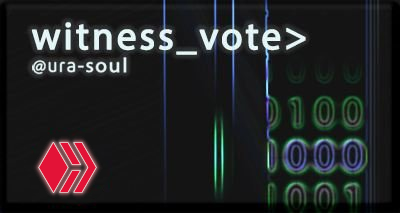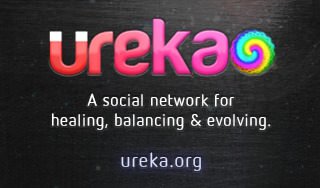The crypto project EOS, spawned from @dan Larimer after he left Steem (Hive's censorship tainted predecessor), was the most funded public project in human history. Now it seems that a substantial amount of that finding may have been phoney. 21 accounts were identified as participating in wash trading and some are connected with one of Dan's 'old friends'. 21 is an already significant number for EOS - let's explore!
Coin Telegraph today reported on a new study from Professor John M. Griffin at the University of Texas that claims almost half of the money that was 'raised' during the EOS launch process came from dodgy dealing that seems to have been a deliberate and artifical pumping of the EOS price.
2.895 million Ether ($1.721 billion USD), or 39% of the Ether raised in the crowdsale, are also traced from the ICO crowdsale wallet back to Bitfinex.
In essence, it is alleged that large amounts of trades took place where the buyer bought and sold the same tokens rapidly to give the false impression of an inflated level of trade volume. This is known as wash trading and is illegal.

The full study goes into detail to explain the process, list the accounts involved and inquire into the possibilities.
There are many reasons why this activity is inconsistent with non-nefarious explanations. First, the suspicious accounts often bought and sold similar amounts of Ether on a daily and weekly basis, and typically sent EOS to exchanges within 40 minutes. Both activities are inconsistent with a legitimate long-term demand for the token. Second, this type of recycling activity of buying EOS in the crowdsale and then selling EOS at an exchange was generally not profitable and would not have been the most cost effective way for a legitimate investor to purchase EOS over the period. Yet, this would be the most cost effective way to inflate the price of EOS and to create the perception that EOS had more demand than it legitimately did. Third, the recycling of Ether into EOS and EOS back to the exchanges and to Ether, is shown to be unlike any other activity by other traders in the EOS crowdsale. Fourth, the accounts appear almost solely created for this purpose, unlike other accounts that are widely used.
source: IntegraFEC
The paper identifies the owner of some of the suspect acounts as Li XiaoLai at Big One Exchange.
Five of the suspicious accounts used common deposit addresses at Binance and Bitfinex, providing strong evidence that they are controlled by the same entity. These five accounts contribute $232 million worth of Ether to the crowdsale, more than any other account. These accounts have related transactions with the BigOne exchange, so it is possible that these accounts are related in some manner to Li Xiaolai, the founder of BigOne, who has claimed publicly to be a large investor of EOS. Li Xiaolai has had business relationships with Block.one personnel in the past.
source: IntegraFEC
XiaLai publicly identified himself as one of Dan Larimer's old friends:
"Daniel Larimer, CTO of EOS, is my old friend. I’ve invested in the decentralized cryptocurrency exchange which he created back in 2013 and I’m a long-term supporter of it. Then when he joined EOS and started to lead the project’s development, I also bet on it." Li Xiaolai
source: Daily Fintech
The paper highlights how the amounts of Ethereum that were used in this process increased as time went on and this seems to be reflective of the increased money that was available to the crowdfund wallets as a result of the ongoing sale.
If true, this is a damning piece of evidence for those controlling the crowdfund wallets for EOS, which as I understand is the team at Block One, including Brock Pierce and potentially Dan Larimer.
Lucky 21
As a side note, the twenty one accounts identified in this scheme mirror the twenty one accounts needed to dominate the block production process of EOS. EOS uses Proof of Stake and a community voting mechanism based on staked money in order to decide on who from the community will govern the network. This is the same model (roughly) that was used for the Steem blockchain and is the same that Hive's governance system is based on. The twenty one accounts that receive the most stake voting from the community effectively decide the future of the network through governance decisions.
While this is an idea based on representational democracy, it inherits some of the flaws of representational democracy too - namely, that the interests of the many are being syphoned into the hands of a small number of people. In this case, this process takes place only based on how much money is invested into putting the people in those positions. In national governments, the idea of simply buying a place in parliament is 'frowned upon' because it is clearly not in the spirit of fair governance. DPOS (distributed proof of stake), however, takes a different view and basically says that this is a good idea because whoever puts the most money in has the most to lose if things go badly as a result of the governance decisions.
Clearly, governance of a nation is somewhat different to governance of a blockchain, since - for one - users of a blockchain can much more easily leave and go elsewhere than can people in a nation. Blockchains also don't govern life and death in a direct way. None the less, this process was clearly exposed as problematic when Justin Sun from the Tron blockchain performed a hostile takeover of the Steem blockchain (also created by Dan Larimer) - leading to the forking of Steem by the community and the creation of the (uncensored) Hive blockchain.
So - it seems that either two of Dan Larimer's projects have been the unwitting victim of major exploit attempts (possibly led by crypto bosses from Asia and which he possibly personally benefited from), or he may not be such a squeaky clean 'nerd' as his image portrays.
As a witness for Hive myself (outside of the consensus of the top 21 witnesses on Hive), I witnessed the way that the top 21 positions on Steem were manipulated by the Billionaire from Wuhan, China just at the start of the COVID19 crisis in 2020. Having also invested into EOS early on, following the success and promise of both Steem and EOS, I can't help but notice the repeating patterns here. I put my time and energy into a project related to Dan Larimer and evidence later comes out that a shadowy Billionaire from Asia has been instrumental in derailing or misleading the process for personal profit or even political gain.
Getting to the bottom of this might not be easy but I smell a massive court case on the horizon!
Wishing you well,
Ura Soul

Read My User Guide for Hive Here
View My Witness Application Here
View Some of My Witness Related Posts
Note: Witnesses are the computer servers that run the Hive Blockchain.
Without witnesses there is no Hive blockchain or DApps such as PeakD and 3Speak... You can really help Hive by making your witness votes count!



It gets more nefarious than you make out here.
What often happens in these tightly held "crowdsales", is that they're not heavily bought into by the crowd at all. In-fact, due to the huge volumes the insiders contribute to each mini crowdsale period, which was designed to allocate the coins based on your percentage contribution out of the total for that period, it meant that the majority of the coins actually went to the insider taking part in this.
And finally, to tie it all together, the juiciest and yet most profitable part of it all, is that the funds that were raised are frequently partially (or in some cases in full) refunded back to the buyer (insider) which can be as described above, recycled to obtain even more share of the EOS.
So, to recap:
Sounds quite likely, yes. To avoid legal problems, the authors of this study appear to have limited their leaps of logic and accusations to ensure that only what can be proven is stated.
EOS has been a great disappointment for me, even more when you discover this kind of news
Absolutely, yes. As soon as I learned that Brock Pierce was involved I dropped out of following it. His past record is very shady indeed.
👀 👍🏾 @tipu curate
Upvoted 👌 (Mana: 55/95) Liquid rewards.
If this is true, then it will be a bad spell for EOS and the cryptocurrency community at large